
Santa María la Blanca: The Heart of Toledo's History and Culture
Discover Santa María la Blanca in Toledo, where Moorish, Christian, and Jewish cultures converge in a neighborhood rich in history, architecture, and vibrant local life.
Nestled in the historic city of Toledo, Santa María la Blanca is a neighborhood that breathes history and exudes charm. This area is home to one of the oldest synagogues still standing in Europe, the Synagogue of Santa María la Blanca. Built in the 12th century, this architectural gem showcases a harmonious blend of Moorish, Christian, and Jewish influences, making it a testament to the city’s rich multicultural past. Wandering through the cobblestone streets of Santa María la Blanca, you will find a tapestry of medieval buildings, quaint shops, and inviting cafes. The neighborhood's narrow alleys and stone facades transport visitors back in time, offering a glimpse into Toledo's storied past. The area is also known for its artisan workshops where you can witness traditional crafts such as damascene metalwork, a technique that has been perfected over centuries. Santa María la Blanca is not just about history; it is a vibrant community where the past and present coexist. The neighborhood hosts various cultural events throughout the year, from music festivals to art exhibitions, providing a lively atmosphere that captivates both locals and tourists alike. Whether you are a history buff, an art lover, or simply looking to immerse yourself in the authentic Spanish culture, Santa María la Blanca is a must-visit destination in Toledo.
Local tips in Santa María la Blanca
- Visit the Synagogue of Santa María la Blanca early in the morning to avoid crowds and fully appreciate its serene beauty.
- Spend some time exploring the artisan workshops for unique souvenirs and a glimpse into traditional craftsmanship.
- Enjoy a coffee or a meal at one of the local cafes for an authentic taste of Toledo's culinary delights.
- Check the local event calendar, as the neighborhood frequently hosts cultural festivals and exhibitions.
Santa María la Blanca: The Heart of Toledo's History and Culture
Nestled in the historic city of Toledo, Santa María la Blanca is a neighborhood that breathes history and exudes charm. This area is home to one of the oldest synagogues still standing in Europe, the Synagogue of Santa María la Blanca. Built in the 12th century, this architectural gem showcases a harmonious blend of Moorish, Christian, and Jewish influences, making it a testament to the city’s rich multicultural past. Wandering through the cobblestone streets of Santa María la Blanca, you will find a tapestry of medieval buildings, quaint shops, and inviting cafes. The neighborhood's narrow alleys and stone facades transport visitors back in time, offering a glimpse into Toledo's storied past. The area is also known for its artisan workshops where you can witness traditional crafts such as damascene metalwork, a technique that has been perfected over centuries. Santa María la Blanca is not just about history; it is a vibrant community where the past and present coexist. The neighborhood hosts various cultural events throughout the year, from music festivals to art exhibitions, providing a lively atmosphere that captivates both locals and tourists alike. Whether you are a history buff, an art lover, or simply looking to immerse yourself in the authentic Spanish culture, Santa María la Blanca is a must-visit destination in Toledo.
Iconic landmarks you can’t miss
Santa Iglesia Catedral Primada de Toledo
Explore the stunning Santa Iglesia Catedral Primada de Toledo, a masterpiece of Gothic architecture and a symbol of Toledo's rich cultural heritage.
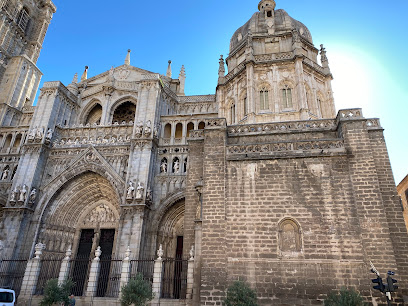
Monasterio de San Juan de los Reyes
Experience the architectural beauty and rich history of Monasterio de San Juan de los Reyes, a must-see monastery in Toledo, Spain.
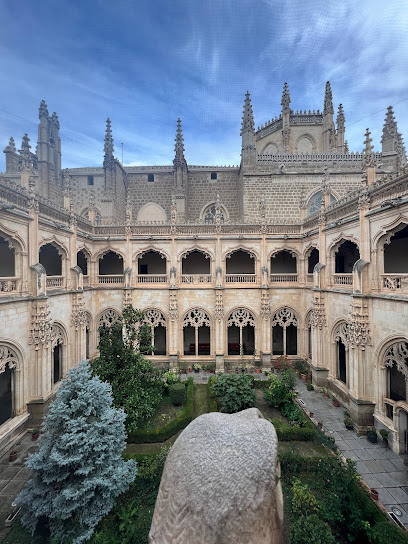
Sinagoga de Santa María La Blanca
Explore the stunning Sinagoga de Santa María La Blanca, a historical landmark showcasing Toledo's rich cultural heritage and architectural beauty.
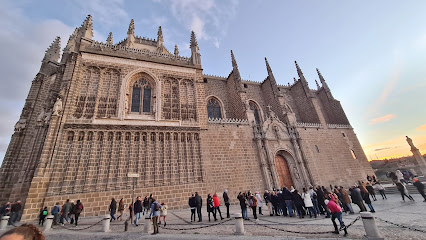
Sinagoga del Tránsito
Explore the Sinagoga del Tránsito, a stunning museum in Toledo showcasing rich Jewish heritage and exquisite Mudéjar architecture.
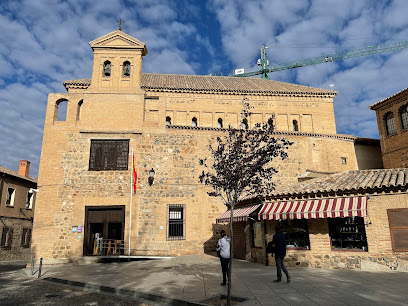
Puerta del Cambrón
Discover the historical charm of Puerta del Cambrón in Toledo, Spain, a gateway that bridges the past and present with stunning architecture and rich cultural heritage.
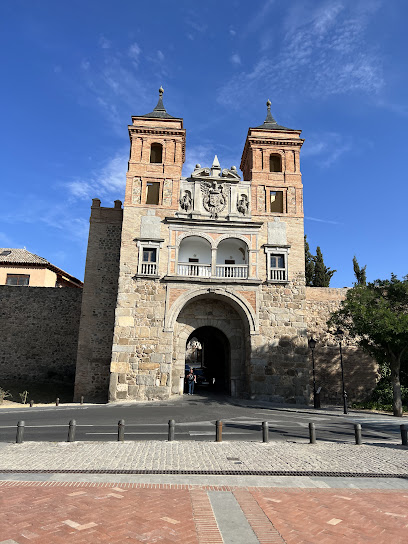
Puerta del Sol
Discover the vibrant heart of Toledo at Puerta del Sol, a historical landmark brimming with culture, charm, and captivating stories.
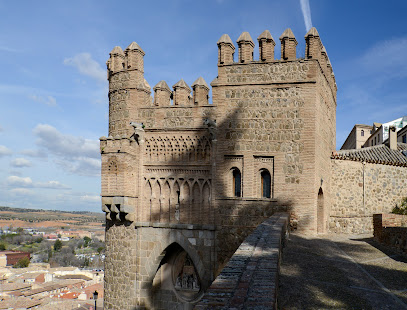
El pozo de los deseos R.Saavedra
Discover the enchanting El Pozo de los Deseos in Toledo, where wishes come true amidst rich cultural heritage and stunning surroundings.
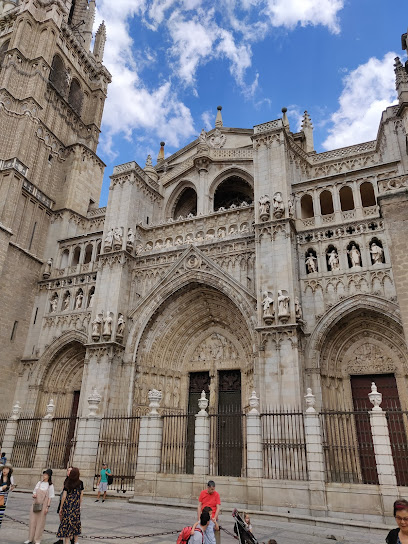
Casa del Judío
Explore the rich Jewish heritage of Toledo at Casa del Judío, a captivating historic site showcasing intricate architecture and cultural treasures.
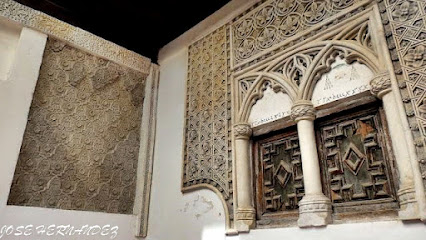
Baños judíos antiguos
Explore the Baños judíos antiguos in Toledo, a historical gem revealing the rich Jewish heritage and architectural beauty of medieval Spain.
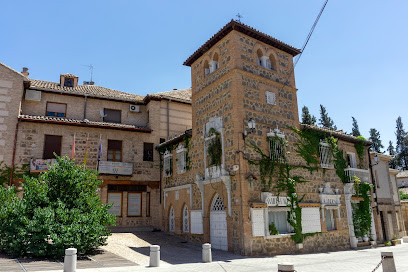
Unmissable attractions to see
San Martin's Bridge
Discover the stunning San Martin's Bridge in Toledo, where history, architecture, and breathtaking views await every traveler.

Sinagoga de Santa María La Blanca
Explore the stunning Sinagoga de Santa María La Blanca, a historic gem showcasing Toledo's rich cultural and architectural heritage.
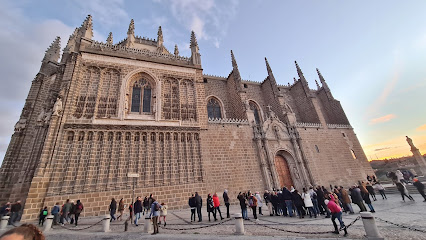
Museo del Greco
Discover the legacy of El Greco at the Museo del Greco in Toledo, an essential stop for art lovers and culture enthusiasts.
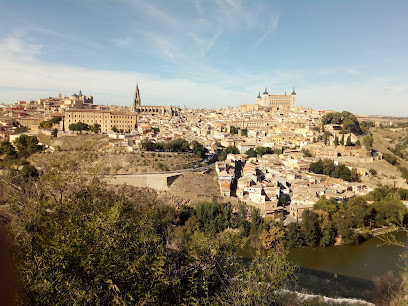
Sinagoga del Tránsito
Discover the rich Jewish heritage and stunning Mudejar architecture at the Sinagoga del Tránsito in Toledo, a must-visit historical landmark.
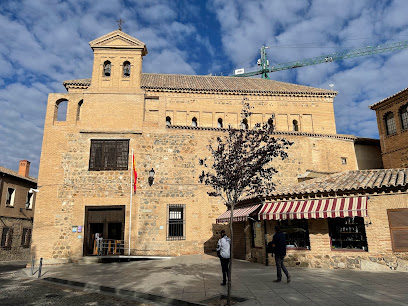
Plaza San Juan de los Reyes
Explore the enchanting Plaza San Juan de los Reyes, a picturesque square in Toledo filled with stunning architecture and vibrant local culture.
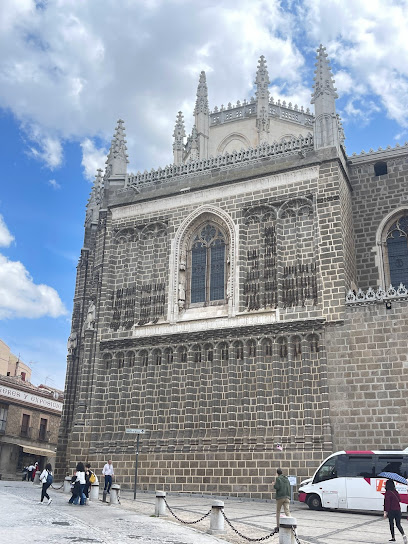
Baños judíos antiguos
Explore the historic Baños Judíos Antiguos, a unique glimpse into Toledo's rich Jewish heritage and medieval architectural beauty.
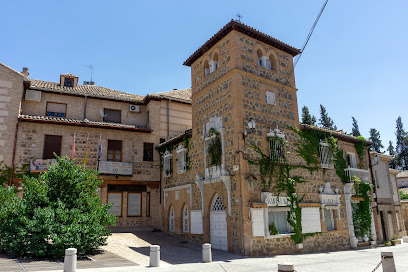
Ángel Gótico
Explore the architectural marvels and historical charm of Ángle Gótico in Toledo, a captivating destination for every traveler seeking beauty and history.
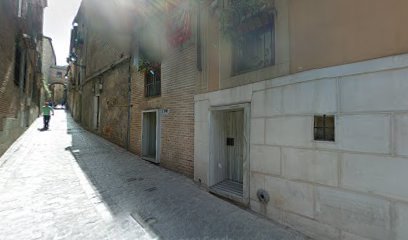
Essential places to dine
Restaurante Venta de Aires
Experience authentic Spanish cuisine at Restaurante Venta de Aires in Toledo – where tradition meets taste in every bite.
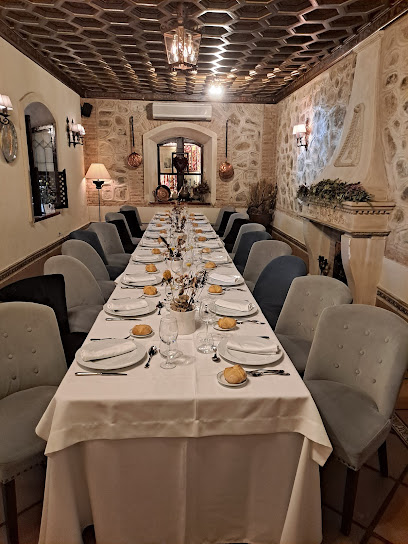
Restaurante Alfileritos 24
Experience authentic Spanish cuisine at Restaurante Alfileritos 24 in Toledo - where tradition meets modern dining.
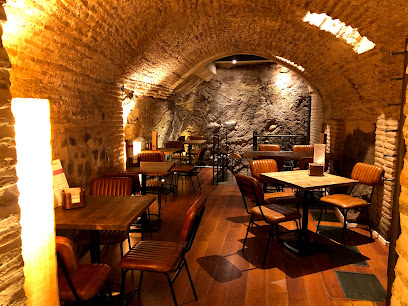
Taberna Skala
Discover authentic Mediterranean flavors at Taberna Skala, Toledo's top destination for exquisite tapas and warm hospitality.
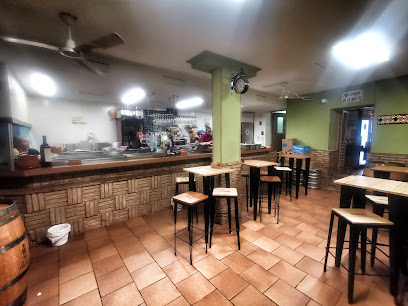
Taberna Embrujo
Experience authentic Spanish cuisine at Taberna Embrujo in Toledo—where traditional flavors meet modern flair.
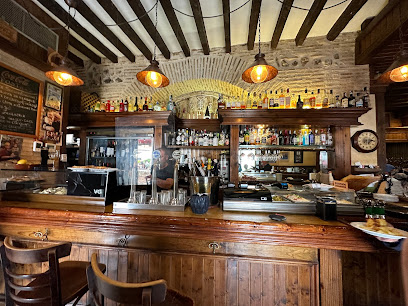
Restaurante Museo de Productos de Castilla-La Mancha
Experience authentic Spanish cuisine at Restaurante Museo de Productos de Castilla-La Mancha in Toledo - where tradition meets flavor.
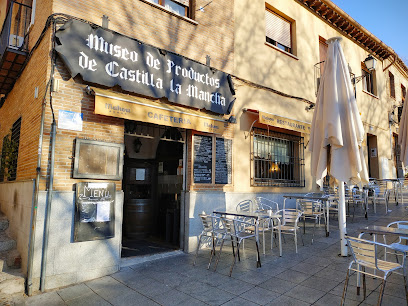
La Cave
Discover La Cave in Toledo: A delightful restaurant offering authentic Mediterranean and Spanish cuisine with a cozy atmosphere perfect for all occasions.
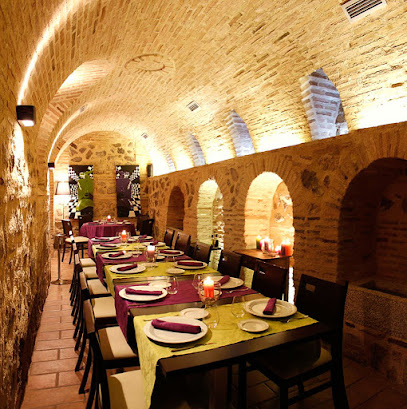
Restaurante La Clandestina
Experience exquisite Mediterranean cuisine and innovative cocktails at Restaurante La Clandestina in Toledo.
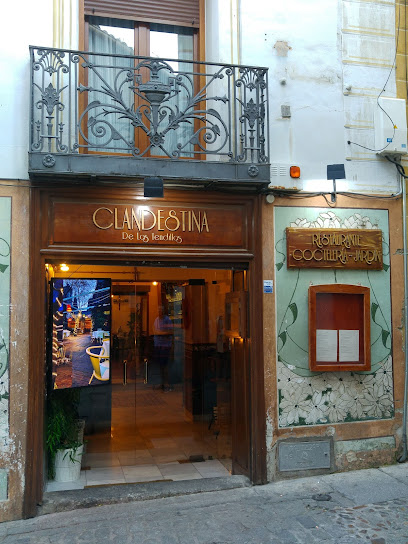
Lo Nuestro Taperia & Restaurante
Discover traditional Spanish cuisine at Lo Nuestro Taperia & Restaurante in Toledo – where every meal tells a story.
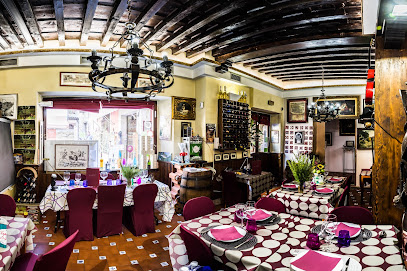
Restaurante La Orza
Experience exquisite Castilian and Mediterranean cuisine at Toledo's Restaurante La Orza - where tradition meets elegance.
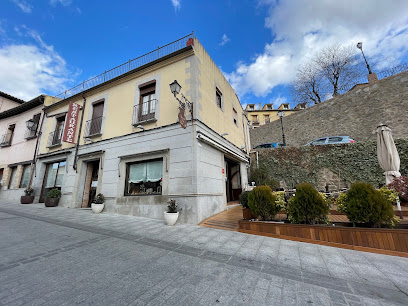
Restaurante La Naviera
Discover exquisite seafood and Mediterranean cuisine at Restaurante La Naviera in Toledo – where every meal is a culinary delight.
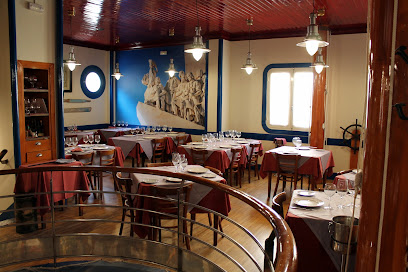
Restaurante La Fábrica de Harinas
Experience exquisite Mediterranean cuisine at Restaurante La Fábrica de Harinas in Toledo – where tradition meets flavor in every dish.
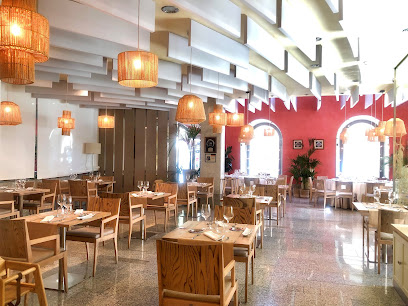
Restaurante Marrakech
Discover authentic Mediterranean dining at Restaurante Marrakech in Toledo – where every dish tells a story.
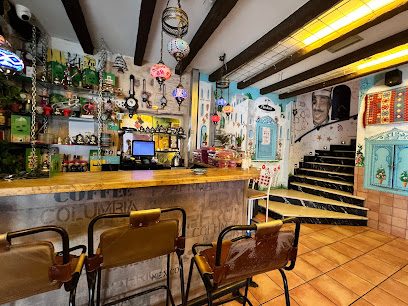
Restaurante Victor Sánchez-Beato
Experience exquisite flavors at Restaurante Victor Sánchez-Beato in Toledo - where tradition meets innovation in every dish.
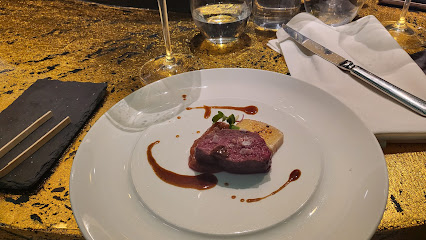
Taberna Artesanal La Tintilla
Experience authentic Spanish tapas and fine wines at Taberna Artesanal La Tintilla in Toledo – a must-visit for every food lover.
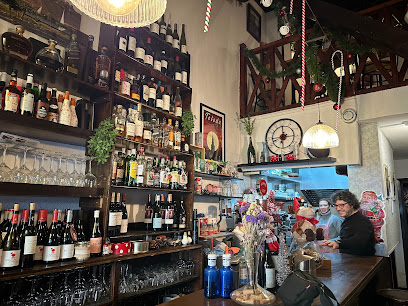
Restaurante Judería Toledo
Discover exquisite traditional Spanish cuisine at Restaurante Judería Toledo, where history meets flavor in every dish.
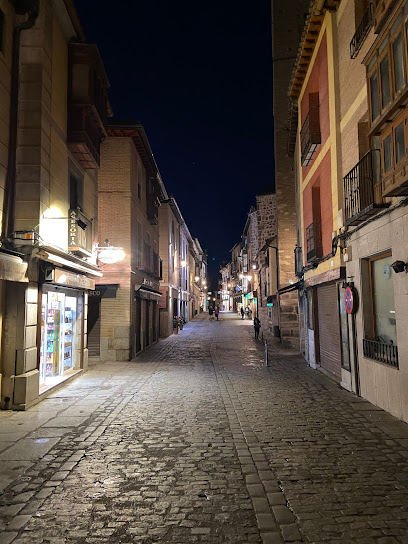
Markets, malls and hidden boutiques
FRAGOLA TOLEDO
Explore Fragola Toledo, a charming gift shop showcasing unique handicrafts and local artisan treasures in the heart of historic Toledo.
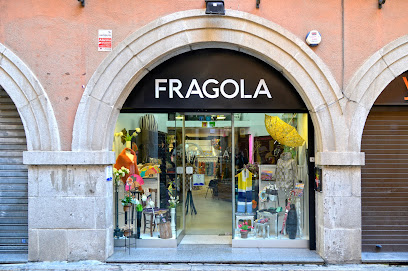
The art of Toledo
Explore Toledo's vibrant art scene at 'The Art of Toledo' gift shop, featuring unique handcrafted souvenirs and local artistry.
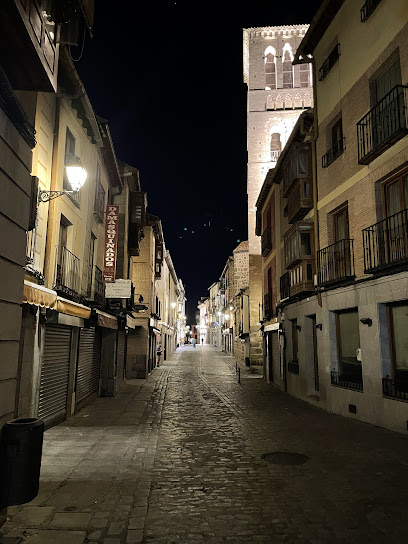
Olive Gallery S,L
Experience the flavors of Toledo at Olive Gallery, a gourmet grocery store offering local delicacies and artisanal products.
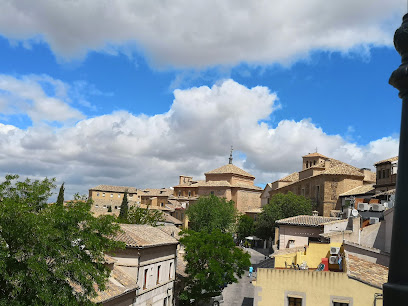
Tienda de Sefarad - Sepharad Shop
Explore Tienda de Sefarad in Toledo for an exceptional selection of books and unique souvenirs celebrating Jewish heritage and local culture.
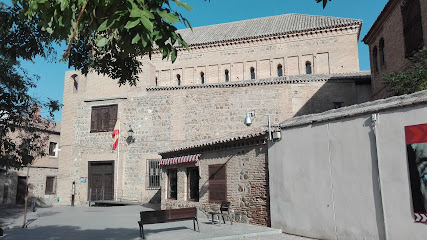
Souvenirs Toledo
Discover unique local crafts and treasures at Souvenirs Toledo, the ultimate destination for authentic souvenirs in the heart of the historic city.
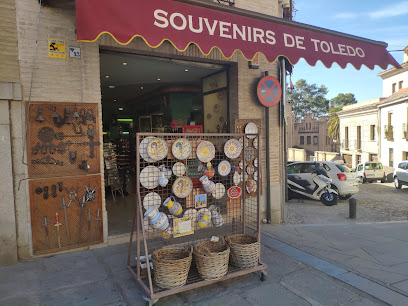
Artesania Toledana
Explore Artesania Toledana, a gift shop in Toledo showcasing authentic Spanish craftsmanship and unique handmade souvenirs.
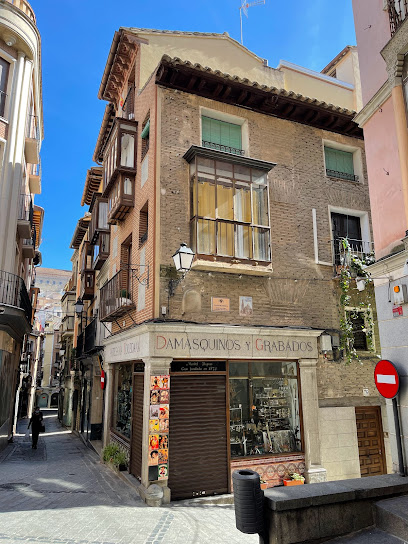
Acero Damasco
Explore Acero Damasco in Toledo for unique souvenirs that celebrate the rich craftsmanship and culture of Spain.
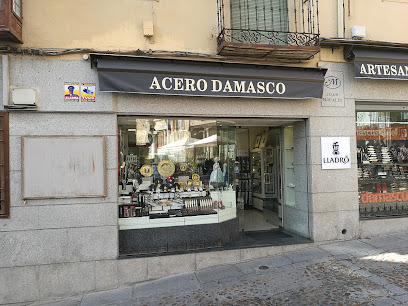
Ticket Office & Souvenirs Shop
Discover Toledo's rich culture and history at the Ticket Office & Souvenirs Shop, where unique gifts and local crafts await your exploration.
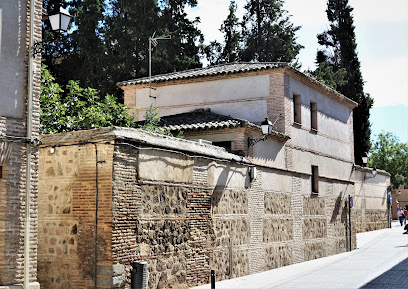
Laie Santa María la Blanca
Explore Laie Santa María la Blanca, Toledo’s charming book store offering a rich collection of literature, art books, and cultural events in a cozy atmosphere.
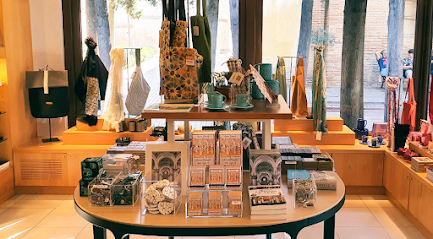
Artesanía Medina - Hombre de Palo
Explore the rich craftsmanship of Toledo at Artesanía Medina – your destination for unique handmade gifts and authentic Spanish artistry.
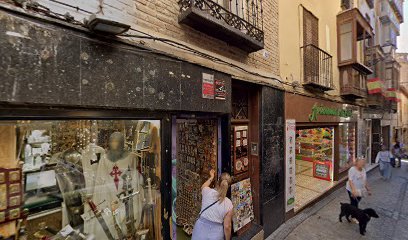
Essential bars & hidden hideouts
El Trébol
Discover the vibrant flavors of Spain at El Trébol, Toledo's beloved tapas bar offering a delightful mix of traditional and modern dishes.
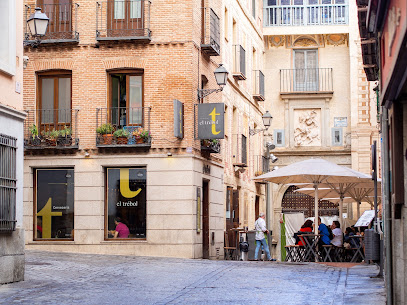
Cervecería La Abadía
Experience Toledo's culinary delights at Cervecería La Abadía, a brewpub combining exquisite Spanish tapas with locally crafted beers.
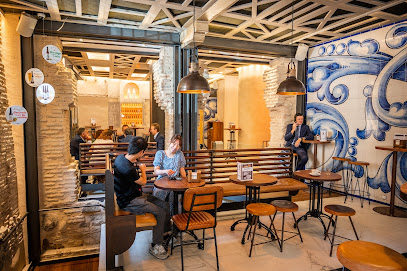
Sinagoga de Santa María La Blanca
Discover the architectural beauty and rich history of Sinagoga de Santa María La Blanca in Toledo, a must-visit cultural landmark.

Bar Ludeña
Experience authentic Spanish cuisine at Bar Ludeña, a must-visit grill bar in Toledo known for its delicious meals and inviting atmosphere.
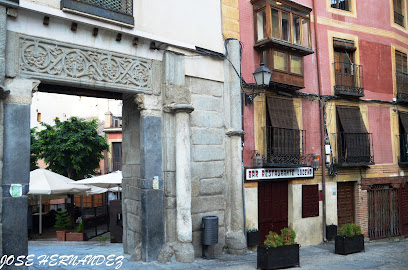
Maruxiña Lounge
Discover the exquisite flavors of Mediterranean cuisine at Maruxiña Lounge, Toledo's ultimate fine dining and tapas experience.
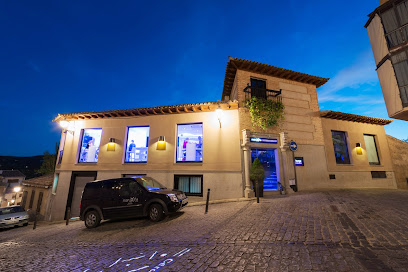
Restaurante Rinconcito Tap Station
Experience the vibrant flavors of Toledo at Restaurante Rinconcito Tap Station, where authentic tapas and craft beers await.
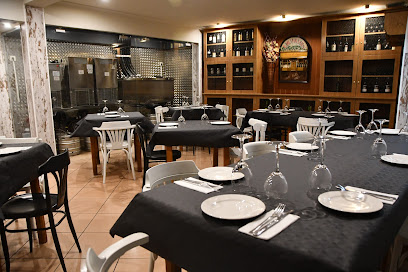
Bar Margot
Discover the vibrant atmosphere and authentic flavors of Toledo at Bar Margot, the perfect spot for tapas and local drinks.

Cervecería artesanal Lúpulo Craft Beer Toledo
Discover the authentic taste of Toledo at Lúpulo Craft Beer, where artisanal brews meet traditional Spanish cuisine in a welcoming atmosphere.

Barten Tapería Restaurante Coctelería
Experience the vibrant culinary scene of Toledo at Barten Tapería, where traditional tapas meet innovative cocktails in a cozy setting.
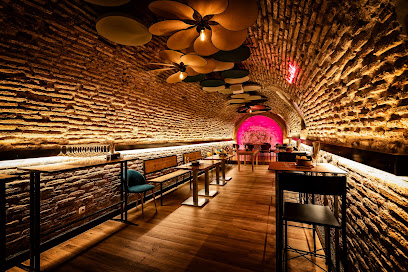
Bar Tapería La Martina
Savor the vibrant culinary traditions of Toledo at Bar Tapería La Martina, where exquisite tapas and local flavors come together in a lively atmosphere.
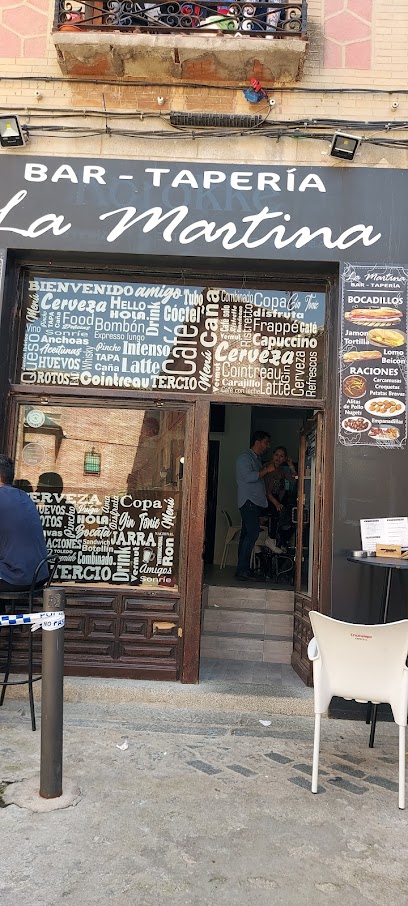
Local Phrases
-
- HelloHola
[oh-la] - GoodbyeAdiós
[ah-dee-ohs] - YesSí
[see] - NoNo
[noh] - Please/You're welcomePor favor/De nada
[por fah-vor/deh nah-dah] - Thank youGracias
[grah-syahs] - Excuse me/SorryPerdón/Lo siento
[pehr-dohn/loh see-ehn-toh] - How are you?¿Cómo estás?
[koh-moh ehs-tahs] - Fine. And you?Bien. ¿Y tú?
[byen. ee too] - Do you speak English?¿Hablas inglés?
[ah-blahs een-glehs] - I don't understandNo entiendo
[noh ehn-tyen-doh]
- HelloHola
-
- I'd like to see the menu, pleaseMe gustaría ver el menú, por favor
[meh goos-tah-ree-ah behr ehl meh-noo, por fah-vor] - I don't eat meatNo como carne
[noh koh-moh kahr-neh] - Cheers!¡Salud!
[sah-looth] - I would like to pay, pleaseMe gustaría pagar, por favor
[meh goos-tah-ree-ah pah-gahr, por fah-vor]
- I'd like to see the menu, pleaseMe gustaría ver el menú, por favor
-
- Help!¡Ayuda!
[ah-yoo-dah] - Go away!¡Vete!
[veh-teh] - Call the Police!¡Llama a la policía!
[yah-mah ah lah poh-lee-see-ah] - Call a doctor!¡Llama a un médico!
[yah-mah ah oon meh-dee-koh] - I'm lostEstoy perdido/a
[ehs-toy pehr-dee-doh/dah] - I'm illEstoy enfermo/a
[ehs-toy ehn-fehr-moh/ah]
- Help!¡Ayuda!
-
- I'd like to buy...Me gustaría comprar...
[meh goos-tah-ree-ah kohm-prahr...] - I'm just lookingSolo estoy mirando
[soh-loh ehs-toy mee-rahn-doh] - How much is it?¿Cuánto cuesta?
[kwan-toh kwehs-tah] - That's too expensiveEsto es demasiado caro
[ehs-toh ehs deh-mah-syah-doh kah-roh] - Can you lower the price?¿Puedes bajar el precio?
[pweh-dehs bah-hahr ehl pree-syoh]
- I'd like to buy...Me gustaría comprar...
-
- What time is it?¿Qué hora es?
[keh oh-rah ehs] - It's one o'clockEs la una en punto
[ehs lah oo-nah ehn poon-toh] - Half past (10)Son las diez y media
[sohn lahs dyehs ee meh-dee-ah] - MorningMañana
[mah-nyah-nah] - AfternoonTarde
[tahr-deh] - EveningNoche
[noh-cheh] - YesterdayAyer
[ah-yehr] - TodayHoy
[oy] - TomorrowMañana
[mah-nyah-nah] - 1Uno
[oo-noh] - 2Dos
[dohs] - 3Tres
[trehs] - 4Cuatro
[kwah-troh] - 5Cinco
[seen-koh] - 6Seis
[says] - 7Siete
[syeh-teh] - 8Ocho
[oh-choh] - 9Nueve
[nweh-veh] - 10Diez
[dyehth]
- What time is it?¿Qué hora es?
-
- Where's a/the...?¿Dónde está...?
[dohn-deh ehs-tah] - What's the address?¿Cuál es la dirección?
[kwal ehs lah dee-rehk-syon] - Can you show me (on the map)?¿Puedes enseñarme (en el mapa)?
[pweh-dehs ehn-seh-nyar-meh (ehn ehl mah-pah)] - When's the next (bus)?¿Cuándo es el próximo (autobús)?
[kwan-doh ehs ehl proh-ksy-moh (ow-toh-boos)] - A ticket (to ....)Un billete (a ...)
[oon bee-yeh-teh (ah ...)]
- Where's a/the...?¿Dónde está...?
History of Santa María la Blanca
-
Santa María la Blanca, originally built as a synagogue in the 12th century, stands as a testament to the coexistence of different cultures in Toledo during the medieval period. Commissioned by Jewish merchants, the structure reflects the Mudéjar architectural style, characterized by intricate arches and delicate plasterwork, which emerged from the influence of Islamic art.
-
In 1492, following the expulsion of Jews from Spain, the synagogue was repurposed as a church dedicated to Santa María la Blanca. This transformation highlights the significant religious shifts occurring in Toledo, a city that was once a melting pot of Christian, Muslim, and Jewish communities. The church became a symbol of the Reconquista and the Catholic Monarchs' efforts to unify Spain under Christianity.
-
The architectural significance of Santa María la Blanca lies in its stunning Mudéjar design, which combines Christian and Islamic elements. The church features a series of horseshoe arches, beautiful wooden ceilings, and intricate tile work, making it a prime example of the cultural syncretism that defined Toledo's historical landscape.
-
Santa María la Blanca has played a vital role in Toledo's cultural heritage, inspiring numerous artists and architects. The beauty of its design has influenced various artistic movements over the centuries, and it continues to be a focal point for both local and international visitors interested in the rich tapestry of Toledo's past.
-
Today, Santa María la Blanca is recognized not only as a historical monument but also as a cultural landmark. Preservation efforts have been undertaken to maintain its structural integrity and artistic features, ensuring that future generations can appreciate the historical significance of this unique site within the broader context of Toledo's diverse heritage.
Santa María la Blanca Essentials
-
Santa María la Blanca is centrally located in Toledo, making it accessible from various neighborhoods. From the main train station, Estación de Toledo, you can take a taxi or walk, which takes around 20 minutes. If you're coming from the historic center, it's a short 10-minute walk. Several bus lines, including Line 5, connect to nearby areas, providing easy access.
-
Santa María la Blanca is best explored on foot due to its narrow, winding streets. Public transportation options are limited within the neighborhood, but nearby bus stops provide access to other parts of Toledo. Biking is also an option, with bike rental services available in the city. Taxis can be hailed or booked via apps for convenience.
-
Santa María la Blanca is generally a safe area for tourists. However, standard precautions are advised. Avoid dark alleys at night and be mindful of pickpockets in crowded areas, especially near popular attractions. While Toledo is considered safe, petty crime can occur in tourist hotspots, so always keep an eye on your belongings.
-
In case of an emergency, dial 112 for immediate assistance in Spain. This number connects you to police, fire, and medical services. For non-urgent medical issues, visit one of the local clinics or pharmacies, which are plentiful in Santa María la Blanca. Ensure you have travel insurance that covers emergencies.
-
Fashion: Do dress modestly, especially when visiting religious sites like the nearby synagogue. Don't wear overly casual or revealing clothing. Religion: Do respect local customs; it's customary to cover your shoulders and knees when entering religious buildings. Public Transport: Do be courteous and offer your seat to elderly or disabled passengers. Don't eat or drink on buses. Greetings: Do greet locals with a friendly 'hola' or a handshake. Eating & Drinking: Do try local specialties like marzipan and tapas. Don't refuse food offerings, as it's considered impolite.
-
To experience Santa María la Blanca like a local, visit the neighborhood's small artisan shops and galleries. Engage with local artisans who often welcome visitors and share their craft. Attend a local festival if your visit coincides with one, as these events are vibrant and culturally enriching. Additionally, explore the quiet side streets where you can find hidden gems like quaint cafes and lesser-known historical sites.
Nearby Cities to Santa María la Blanca
-
Things To Do in Madrid
-
Things To Do in Avila
-
Things To Do in Segovia
-
Things To Do in Salamanca
-
Things To Do in Valladolid
-
Things To Do in Teruel
-
Things To Do in Badajoz
-
Things To Do in Burgos
-
Things To Do in Bragança
-
Things To Do in Valencia
-
Things To Do in Seville
-
Things To Do in Murcia
-
Things To Do in Zaragoza
-
Things To Do in Lamego
-
Things To Do in Alicante










